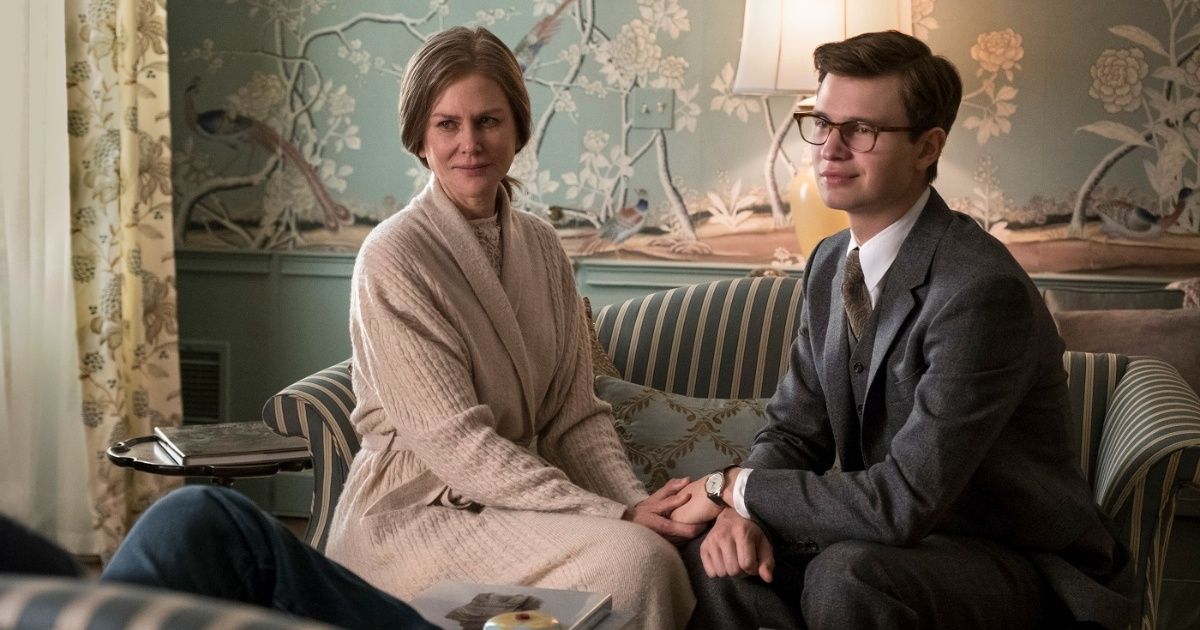
Not all best sellers find their best translation on the big screen. This is the case of “El Jilguero” (The Goldfinch, 2013), Donna Tartt’s novel of the same name, much simpler and more forceful than the film adaptation by director John Crowley (“Brooklyn”) and screenwriter Peter Straughan (“The Snowman”). The film focuses on much of the life of Theo Decker (Ansel Elgort), a young man who had a difficult childhood and was scarred by the loss. The reality of little Theo (Oakes Fegley) stops at the age of 13, when his mother dies during a terrorist attack at the Metropolitan Museum of Art in New York City. Decker and his guilt survive, and with an absent father, he is left in the care of the Barbours, the conservative family of his partner Andy of which he gradually begins to befriend. The relationship is much closer with Mom Samantha (Nicole Kidman), who despite the initial misgiving, ends up considering him to be a child of his own. Suddenly, Theo is not so alone and, in addition to the Barbours, he also begins to frequent the antique shop of James ‘Hobie’ Hobart (Jeffrey Wright), half of Hobart & Blackwell, partner and partner of Welton ‘Welty’ Blackwell, who also died in the attack. The task of the baby is to return a ring that belonged to Welty and, by the way, to meet little Pippa (Aimee Laurence), niece of the antiquarian who survived with several serious injuries. The two boys begin to connect, but Pippa soon moves to Texas with his uncles, another loss for the young Decker who achieves no stability in his life.
The latter seems to come when the Barbours decide to adopt him, but here comes Dad Larry (Luke Wilson) and his girlfriend Xandra (Sarah Paulson) wanting to claim the boy. Thus, Theo leaves the comfort of New York and moves to Las Vegas with a father who gave up his failed acting career and ended up indulking himself in to gambling and drinking. But the children’s spirits remain after meeting Boris (Finn Wolfhard), the son of Ukrainians who helps him to weaken a little. This entire bumpy tour has a common denominator that continues to connect Theo with his tragic past: a small painting by Carel Fabritius (the jilguero of the title), which the boy decided to steal from the ruined museum and preserve it as if it were an amulet. Crowley and Straughan concentrate on every detail of this part of young Decker’s life, going back and forth from the present to the past quite randomly and disorderly, a nonlinear structure that, curiously, does not appear in the novel and, in the case of the film , helps confuse the viewer and twist a plot that never finds true balance. Theo ends up escaping back to New York where, eight years later, he introduces himself to us as a successful antiques dealer, the same ones that RestoreS Hobie. The adventures of your life just begin when you end up involved in much more dangerous situations. The big problem with “The Jilguero” (The Goldfinch, 2019) is its narrative dissimilarness. Filmmakers never know where to stop and where to make the necessary ellipses so that Theo’s story does not become a succession of strange events, often disconnected from each other. The temporal jumps do not facilitate the digestion of a very long and dense story, with which we can never connect, although from the screen they insist on emphasizing the saddest and most traumatic moments in the protagonist’s life.
Dangerous Friendships
Neither Elgort, with all his charm, achieves a little empathy in a set of characters mostly unpleasant (very unpleasant) and bizarre. The Barbours present theself to us as extravagant caricatures and somewhat snob, while in Las Vegas the worst of humanity is concentrated, apparently. In the end, the drama becomes a criminal plot that barely lasts a few on-screen footage within an endless two-and-a-half hour footage that, moreover, is not enough for the film to accommodate and express everything that is proposed. “El Jilguero” is a flat film from all its aspects: performances that do not touch, a storytelling without purpose and a staging that conveys absolutely nothing, despite having the magnanimous Roger Deakins as director of photography. The result is confusing, not because its plot is, but because in the eagerness to be ‘original’ the filmmakers decided to twist something that did not need so many twists.
In this note:
"El reclamo puede ser genuino, pero construido sobre una mentira", apuntó el presidente Javier Milei…
El gobernador de la provincia de Buenos Aires, Axel Kicillof, encabezó un acto en Ensenada…
El diputado nacional de La Libertad Avanza, José Luis Espert, expresó su confianza en la…
Tras la masiva reaparición de Cristina Fernández de Kirchner, el presidente Javier Milei apuntó contra…
El principal propósito de la nueva comisión es evaluar los recursos humanos en el Senado,…
En una medida que busca redefinir las condiciones de los seguros de automóviles en Argentina,…
Esta web usa cookies.